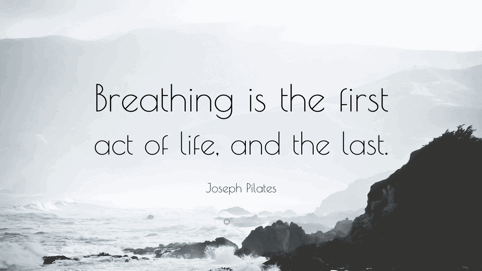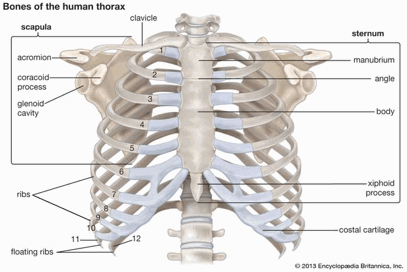Things you'll hear me say no.1 - "3D Breathing"

One of the core principles in pilates is breathing, and if you’ve ever been in a class, you’ll know that there is a strong focus on breath.
I often speak about 3D breathing in class because of the way the “ribs cage” moves.
(picture credit: QuoteFancy)
Anatomy math:
Rib cage = 12 pairs of ribs + sternum (breast bone) + thoracic vertebrae

(picture credit: Encyclopedia Britannica, Inc.)
The rib cage houses our lungs and heart safely. It is able to expand when we inhale and return to its resting position, or even become slightly smaller than its resting position, when we exhale.
During inhalation, the ribcage expands from top to bottom, from front to back and from side to side, thus “3D breathing”.
One can observe (and palpate) the front to back and side to side movement of the ribcage when someone with normal, healthy lungs and muscles takes a deep breath in.
Interesting facts:
- You can increase your lung capacity with exercise that mobilizes the ribcage and strengthen breathing muscles.
- The diaphragm is the main muscle of inspiration.
- When breathing in deeply, the external intercostal muscles assist the diaphragm to increase the volume of the rib cage, and thus the volume of air, further.
- When breathing out in a relaxed manner, the diaphragm relaxes and air flows out.
- When breathing out forcefullly, the internal intercostal muscles assist in decreasing the size of the rib cage and thus expelling more air. The abdominal muscles also assist the forceful expelling of air from the lungs.
- One’s lungs are never truly “empty”. There is always some air in your lung, even if you exhale maximally. This volume of air is called the “residual volume”.

(picture credit: Wikipedia)


